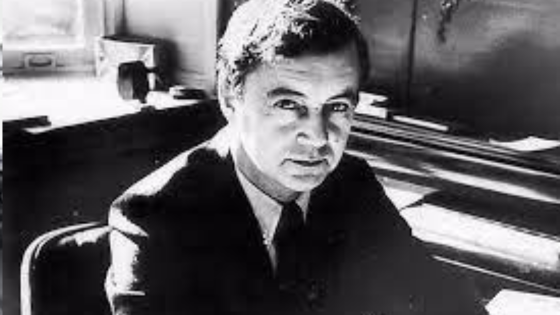Erving Goffman was a prominent sociologist and writer known for his pioneering work in the field of symbolic interactionism. He was born on June 11, 1922, in Mannville, Alberta, Canada. He grew up in a Jewish family in Canada. His parents, Max and Anne Goffman, were Ukrainian immigrants. He attended the University of Manitoba, where he initially pursued an undergraduate degree in chemistry before switching to sociology. After completing his bachelor’s degree, Goffman pursued graduate studies at the University of Chicago, a renowned hub for sociological research. There, he was exposed to the ideas of prominent sociologists such as Herbert Blumer and Everett Hughes, who heavily influenced his approach to studying social interactions.
Goffman’s career was marked by groundbreaking research that transformed the way scholars and researchers viewed human behavior within social contexts. He is mainly known for his concept of “dramaturgy,” which likens social interactions to a theatrical performance, wherein individuals engage in impression management to present themselves in a favorable light. In his doctoral dissertation, which later became his first major book, “The Presentation of Self in Everyday Life” (1959), Goffman introduced his dramaturgical perspective. He argued that individuals adopt various roles and masks to navigate the complexities of social situations. This concept, along with his exploration of “front stage” and “backstage” behaviors, has become foundational in the study of sociology and communication.
Throughout his career, Goffman wrote many influential books, including “Asylums: Essays on the Social Situation of Mental Patients and Other Inmates” (1961), where he examined the effects of institutionalization on individuals, then in Interaction Rituals (1967), he discussed the importance of “interaction rituals” in maintaining social order and cohesion. He explored the patterns and micro-level dynamics of face-to-face interactions that contribute to the shared meanings and norms in society and in “Frame Analysis: An Essay on the Organization of Experience” (1974), Goffman explored the idea of “frames,” which are cognitive structures that people use to interpret and make sense of social situations. He discussed how frames influence our perception of events, interactions, and the world around us.
Goffman’s ideas extended to the study of stigma, face-to-face interactions, and the micro-level dynamics of social encounters. His insights challenged traditional sociological paradigms and emphasized the significance of the individual’s role in shaping social reality. His contributions have had a lasting impact on various academic disciplines, ranging from sociology and psychology to communication studies and anthropology. His innovative concepts and keen observations of human behavior continue to shape scholars’ understanding of social interactions and the construction of identities.
Tragically, Goffman’s life was cut short by cancer, and he passed away on November 19, 1982, at the age of 60. Despite his relatively short life, his ideas remain integral to the study of society and continue to inspire generations of researchers, students, and thinkers who seek to explore the complexities of human interaction.

Leave a Reply